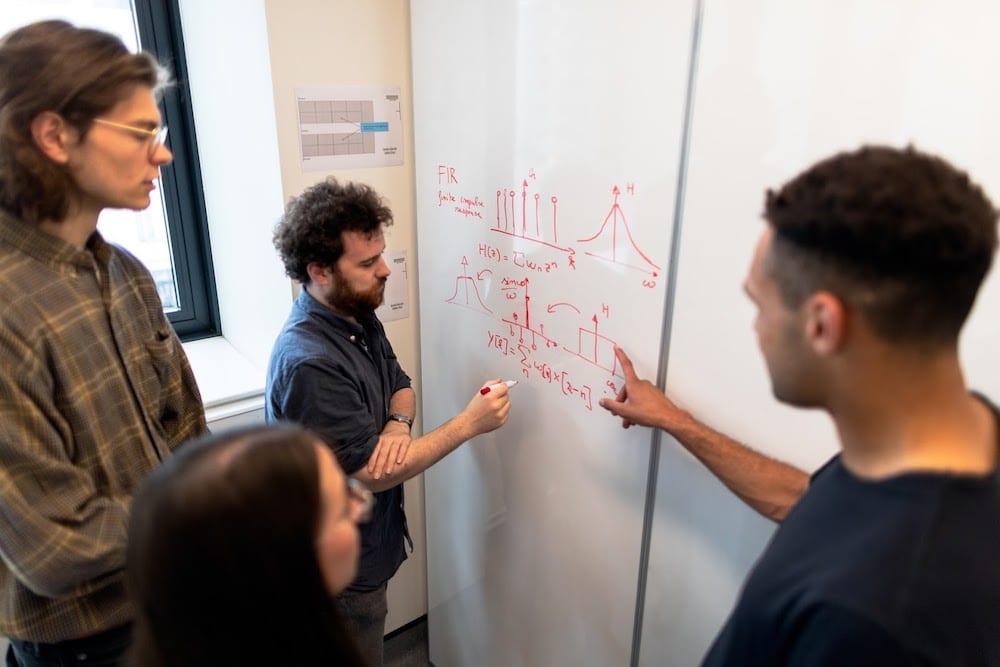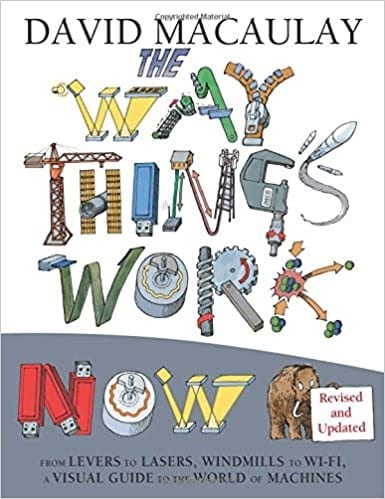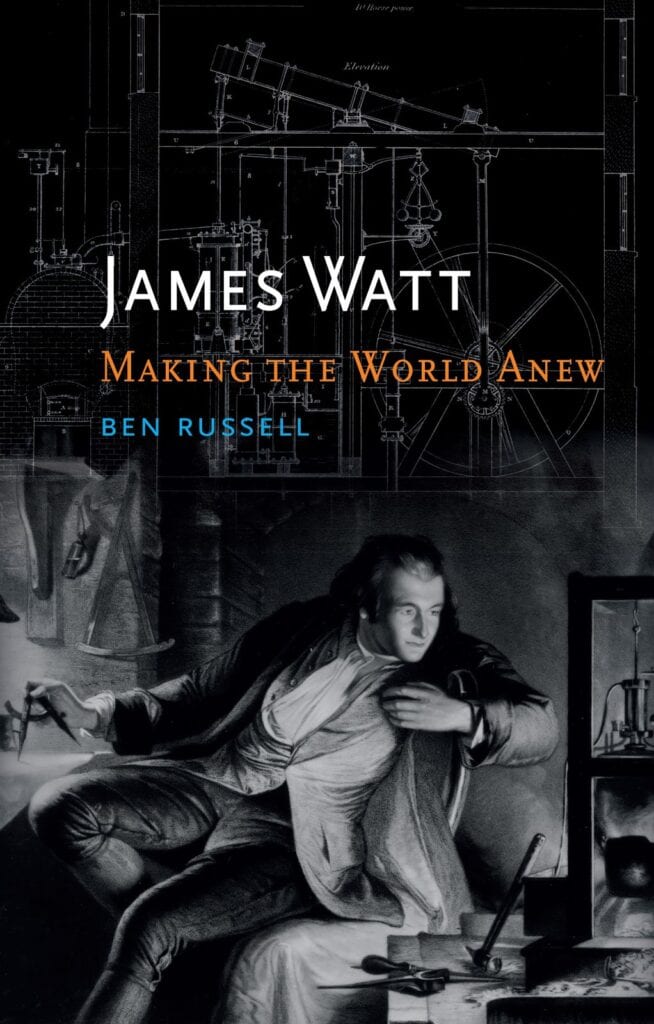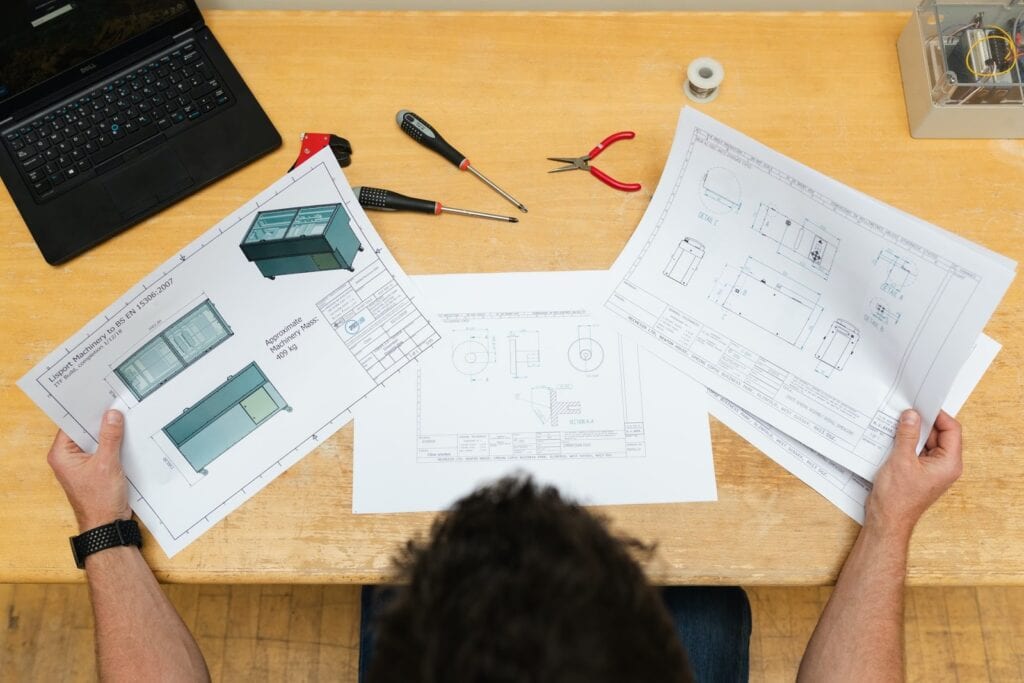Mechanical engineers move heaven and earth to bring the modern world closer to all of us. This is not hyperbole. From Archimedes in classical antiquity to James Watt at the dawn of the industrial revolution, engineers and their mechanical designs have always stood at the forefront of progress, turning science into technology and guiding us into the future.
Just like their forebears, the mechanical engineering students of today are rising to meet the challenges of tomorrow. Machines currently in development will make transformational impacts in the realms of transportation, medicine, robotics, and climate change.
Mechanical engineering courses present a unique opportunity to change the world. While learning how to join this storied profession is no easy matter, its long tradition comes with a trove of learning tools for training the next generation.
In this starter kit, we’ll give you everything you need to decide whether you have the engineering skills, time, energy, and resources to pursue mechanical engineering courses and become a mechanical engineer.
What Is Mechanical Engineering?
In plain terms, mechanical engineering is the theoretical and practical study of how and why machines work. Mechanical engineers design, develop, build, and test mechanical systems and thermal systems. They apply the science of matter, energy, motion, and change to create ever more powerful and efficient machines that improve our quality of life.
Types of Mechanical Engineering
No definition of mechanical engineering can encompass its richness and complexity. The field is so vast that every mechanical engineer must cultivate a specific area of expertise. Boiled down, knowledge of mechanical engineering comes in four basic types.
Materials and Structures
You cannot engineer something without materials, and you cannot engineer something well without understanding how different materials respond to stress, pressure, and force. Once you have a handle on the properties of various materials, you can figure out how to combine them into optimal structures, from the very small (nanoscale) to the very large (macroscale).
Design and Product Realization
Born out of collaborations between engineering departments and private companies, product realization is the practical counterpart to the study of materials and structures. Mechanical engineers use computer-aided design techniques to synthesize knowledge and streamline the work of manufacturers as they develop more cost-effective and energy-efficient products.
Thermal, Fluid, and Energy Systems
Mechanical engineering was not a mature field of study until it could fully integrate the science of energy conversion. Thermodynamics, heat transfer, and fluid mechanics now aid mechanical engineers in their efforts to build better engines, improve power generation, and assist the transition to a greener economy.
System Dynamics and Controls
To better understand and more safely regulate dynamic systems, mechanical engineers make simulations that can grasp the relationship between parts and the whole and develop controls that can manage anticipated changes.
What Is Mechanical Engineering Used For?
The staggering number of things that mechanical engineers do means their skills are always in demand. Below are the most common ways they apply their knowledge.
- Automotives. Mechanical engineers are responsible for the internal combustion engine and they work to make vehicles of all kinds more efficient.
- Manufacturing. The science of materials and structures helps mechanical engineers improve the processes and designs behind the manufacture of consumer products.
- Energy and the Environment. Environmentalists increasingly rely on mechanical engineers for new technologies to reduce fossil fuel emissions in manufacturing, capture carbon dioxide, improve energy storage, and control pollution.
- Robotics. Electrical engineering and computer science majors could not build robots without mechanical engineers to help with things like sensors, materials, and design.
- HVAC and Refrigeration. Mechanical engineers apply their knowledge of thermodynamics, heat transfer, and fluid mechanics to keep us cool in the summer, keep us warm in the winter, and keep our iceboxes cool year-round.
- Biomedicine. Biomedical engineering is an emerging subfield to which mechanical engineers contribute the design and manufacture of biomedical devices.
Learning Mechanical Engineering

Degree programs are the safest and most common route to becoming a mechanical engineer, but you can also earn an engineering license without a formal degree. The licensing exam is grueling, though, so you’ll have a big commitment on your hands either way. In this section, we’ll break down exactly what it takes to learn mechanical engineering.
How Long Does It Take to Become a Mechanical Engineer?
The international community of mechanical engineers has worked hard to create a road map for disciples to follow. As a result, standardized courses of study in mechanical engineering degree programs give us a pretty good idea of how long it takes to join their ranks.
Expect to spend five solid years if you’re starting from scratch. With a strong foundation in science and math, however, you may be able to complete your training and earn your engineering license in four years.
How to Learn Mechanical Engineering: Step-by-Step
Whether you enroll in a formal program or follow an independent curriculum, the path to becoming a mechanical engineer is essentially the same.
- Establish a solid STEM foundation. To succeed in any engineering course, you must be able to solve engineering problems. And in order to solve engineering problems, you need science and math. In the case of mechanical engineering, that means physics, chemistry, and advanced calculus, including differential equations and linear algebra.
- Study core topics in mechanical engineering. These are the practical applications of your science and math foundation. The basic courses are statics, dynamics, thermodynamics, heat transfer, systems design, and computational engineering.
- Choose a specialization and career path. Around the third year in a mechanical engineering program, students branch out and study concentrations to train for a particular career.
- Pass the PE Exam to earn your license. The Principles and Practice of Engineering exam for mechanical engineers consists of 80 questions, lasts nine hours, and costs $375 to take. The version of the test you take is determined by your career path, and versions include HVAC and refrigeration, machine design and materials, and thermal and fluid systems. The passing score varies from test to test, but 70 percent will probably get you there.
The Best Mechanical Engineering Courses and Training

Any student committed to becoming a mechanical engineer must travel a long, difficult road to get there. As the oldest and broadest of all engineering disciplines, the mechanical field of engineering science contains more knowledge than can be imparted in a short course of study, no matter how well-designed the curriculum or how talented the instructor.
All of which is to say, you should not expect to find any shortcuts in your search for courses and training. If you stumble upon a course offering that seems too good to be true, it probably is.
And we wouldn’t have it any other way. Given how much society depends on mechanical engineers for safe, efficient, and constantly improving technologies, we need gatekeepers to guard the knowledge, set the standards for curriculums and licensing, keep the state of scientific understanding up to date, and establish professional engineering organizations for those who earn degrees in mechanical engineering.
Bear that in mind as you browse the courses on this list. Every step you take to increase your knowledge is worthwhile, but only a formal engineering degree can certify your expertise and lend you credibility on the job market.
In-Person Mechanical Engineering Courses
Let’s start by looking at universities and colleges, your best hope for parlaying knowledge of mechanical engineering into a career. The most obvious downside to pursuing in-person education is the higher cost, but that can usually be defrayed by financial aid. If you decide to apply for a bachelor’s degree program, don’t forget to fill out your FAFSA.
There are many excellent programs just in the United States. Any of the nearly 400 mechanical engineering programs accredited by ABET, which sets academic standards in a variety of STEM fields, is probably worth applying to.
Yearly rankings released by the likes of US News and World Report are great places to read reviews of the most well-respected programs. Rather than duplicate their work here, we at Career Karma thought it would be more helpful to provide examples of three different tracks to degree completion, any of which could lead to the knowledge and certification you need to jumpstart your mechanical engineering career.
These are the gold standard track, the budget track, and the exploratory track.
The Gold Standard Track: Stanford University
- Program: Bachelor of Science in Mechanical Engineering – Palo Alto, CA
- Time: 4-5 years (180 credit hours)
- Special Course Requirements: Writing, Technology in Society, Statistics
- Cost: $56,169 per year
The Stanford School of Engineering is among the best in the world. While it’s true that in a given year most applicants will not be admitted, you shouldn’t let that quash your ambition. With good enough grades and the means to pay for it, you could be on your way to the investment of a lifetime.
Every mechanical engineering student at Stanford takes core courses in materials and structures, dynamics, thermodynamics, heat transfer, systems design, and computational engineering. But the breadth of course offerings also extends to electives, which students choose based on their vocational goals.
In the product realization concentration, for example, students take courses to prepare for careers in manufacturing. Students in an energy science track, meanwhile, could end up designing technologies to combat climate change. The possibilities are endless.

"Career Karma entered my life when I needed it most and quickly helped me match with a bootcamp. Two months after graduating, I found my dream job that aligned with my values and goals in life!"
Venus, Software Engineer at Rockbot
The Budget Track: Cleveland State University
- Program: Bachelor of Mechanical Engineering – Cleveland, OH
- Time: 4 years (128 credit hours)
- Special Course Requirements: Technical Writing, Ethics
- Cost: $10,460 or $13,926 per year plus fee
The Washkewicz College of Engineering at Cleveland State University may not have the prestige of Stanford, but the mechanical engineering core curriculum is just as robust. Electives include HVAC systems, applied combustion, and four different laboratories, the better to prepare students for jobs in private industry and government.
Mechanical engineers have access to an honors program, an accelerated master’s option for bachelor’s students, and a senior capstone design competition, complete with cash awards. Through the Center for Engineering Experiential Learning (CEEL), students can also take advantage of paid internships with industry partners, getting a head start on work experience before they graduate.
The Exploratory Track: LaGuardia Community College
- Program: Associate of Science in Mechanical Engineering – Long Island City, NY
- Time: 2 years (63 credit hours), with the option to transfer to a 4-year school
- Special Course Requirements: Writing, Computer Programming
- Cost: $4,800 or $9,600 per year
On the one hand, there is no two-year equivalent of a bachelor’s in mechanical engineering, and an associate degree is not worth much to industry employers. On the other hand, community colleges offer many of the same courses. After two years you can carry those credits to an ABET-accredited school, where you can spend fewer years paying premium tuition.
And if you decide to pursue this strategy, Laguardia Community College is top-notch. Get your calculus, physics, chemistry, and core engineering classes out of the way while enjoying the bread-and-butter career services that make community education so valuable.
Online Mechanical Engineering Courses
For all of the reasons stated above, high-quality online programs in mechanical engineering are difficult to find. As a fundamentally practical discipline, mechanical engineering demands hands-on laboratory training that no online course can supply.
That being said, online degree programs for mechanical engineering do exist. But the universe of distance learning options is larger and more diverse for those who already have a degree in hand. Once you have the core courses under your belt, you should definitely consider online supplemental education in one of the specialized subfields.
IIT Bombay (edX)
- Class Name: Thermodynamics for Mechanical Engineers
- Time: 12 weeks (10 hours per week)
- Prerequisites: High school level proficiency in physics, chemistry, and calculus
- Cost: $50 with a verified certificate
You can’t do much with a mechanical engineering degree unless you know how heat affects different materials and structures and how temperature changes affect mechanical systems. If you need to brush up on your thermodynamics, then this is the course for you.
Three different professors will cover the zeroth, first, and second laws of thermodynamics, entropy, and the relationship between work and energy. Problem sets take the place of labs, so students will still be able to develop their problem-solving skills.
Autodesk (Coursera)
- Class Name: Computer-Aided Design and Digital Manufacturing
- Time: 6 months
- Prerequisites: STEM literacy
- Cost: $49/month after the expiration of a free trial
Sponsored by Autodesk Fusion 360 software, this bundle of five classes drills students in all aspects of the emerging subdiscipline of computer-aided design. The course is structured around a hands-on project, which students work on as they learn how to carry a design idea in our ever-changing digital world from conception to implementation.
Free Mechanical Engineering Courses
The Internet in general has made knowledge more accessible, and mechanical engineering is no exception. Again, these free course materials are no replacement for a full education, but that does not mean you shouldn’t take advantage of them. Especially if you’re just starting, one of these freebies could be the spark that propels the rest of your journey.
MIT OpenCourseWare
- Class Name: How and Why Machines Work
- Time: Self-paced
- Prerequisites: None
- Cost: FREE
How cool is it that the mechanical engineering curriculum at MIT is only a click away? The How and Why Machines Work page is a beginner-friendly public archive of lecture notes, lab notes, and assignments from the Spring 2002 version of the course.
Follow along with the lecture slides as you take a tour through the history of machines, experience the pleasure of taking things apart and putting them back together, and learn the basics of computer-aided design. If you aren’t sure whether you want to learn mechanical engineering, this course will remove all doubts.
Alison
- Class Name: Internal Combustion Engine Basics
- Time: 1.5–3 hours
- Prerequisites: None
- Cost: FREE
No frills here, just nine lessons of course content on the internal combustion engine, one of the classic examples of a mechanical engineering marvel. The course explores the engine’s inner workings while giving students experience using 2D and 3D models to understand basic concepts and solve problems that engineers face every day.
Books for Aspiring Mechanical Engineers
One paradox of learning anything is that outsiders can’t know what the process of becoming an expert is like until they undertake the training for themselves.
But everyone starts somewhere. While no book contains the secret sauce for becoming a mechanical engineer, there are plenty of popular treatments of the subject that will blow your mind. As you debate whether to make a full-time commitment, consider adding the two selections below to your shelf.
The Way Things Work Now, David Macaulay (2016)

This New York Times bestseller is a classic for outsiders looking in. No book does a better job of explaining difficult concepts that all engineers need to understand. Macaulay provides a fun, breezy, and illustrated reading experience without talking down to the reader. Keep a highlighter handy for the first hundred pages, which explore the mysteries of mechanics in detail.
James Watt: Making the World Anew, Ben Russell (2014)

If mechanical engineering had a patron saint, it would be James Watt, inventor of the steam engine and father of the industrial revolution. It is safe to say that professional engineering and engineering as a scientific practice began with Watt in 18th-century United Kingdom.
To help readers wrap their heads around the modern world that mechanical engineering has built, Russell introduces us to this extraordinary man and unpacks the extraordinary time and place that nurtured his genius and ran with his methods.
Online Mechanical Engineering Resources
Mechanical engineers work all their lives to master their craft. It is as much an identity and a lifestyle as a profession. If you’re serious about becoming a mechanical engineer, you’re going to want to keep your new knowledge fresh by staying abreast of the latest developments in the field.
That’s where the two resources below come in.
ASME TechCast By Mechanical Engineering Magazine

The American Society of Mechanical Engineers (ASME) has a podcast. Produced bi-weekly in collaboration with Mechanical Engineering Magazine, ASME TechCast features stories and updates from industry professionals about what’s happening at the cutting edge.
Most episodes are between ten to fifteen minutes long. Recent episodes include an interview about how digital engineering is changing manufacturing, a frank conversation about global dependence on Chinese goods, and a profile of one professor’s breakthrough research on microscopic robots.
eFunda: Engineering Fundamentals
The eFunda website is an engineering cheat sheet for the digital age. Mechanical engineers take in a ton of information, and it would be impossible to memorize it all. Can’t remember Fourier’s Law? EFunda has you covered. Need a quick refresher on the different types of bearings? They have a page for that. You can also browse engineering periodicals in their engineering resource library.
The only catch is that, for full access to everything on the website, you’ll need a subscription. Hobbyists pay $10 per month, but students can get a full year for $36.
Should You Study to Become a Mechanical Engineer?


According to the Bureau of Labor Statistics, the median salary for a mechanical engineer is $88,430. To put it in different terms, mechanical engineers make enough money to quickly pay back their student loans, live comfortably, and save for retirement. As far as career training goes, mechanical engineering is as smart an educational investment as they come.
But the significant time investment required of mechanical engineering students is not for the faint of heart. Whether you’re ready to take the plunge will depend on your life situation, your other goals, and the opportunity costs of choosing mechanical engineering over some other field of study. It’s not for everybody, and your skills may be of more use in a different sector.
But if you’re ready to be the next James Watt, now is the time to start building your future.
About us: Career Karma is a platform designed to help job seekers find, research, and connect with job training programs to advance their careers. Learn about the CK publication.



